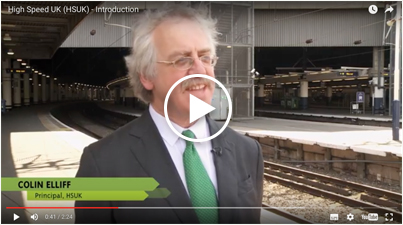CHEAPER
£20bn less than existing plans for HS2 & HS3.
BETTER CONNECTED
Improves 94% of journeys and reduces journey time by an average of 40%.
CLEANER
Saves 600 million tonnes of CO2 and avoids the Chilterns AONB.
SMARTER
Improves regional rail across the UK and integrates with the existing rail infrastructure.
















The work of High Speed UK represents an unprecedented design for the UK rail network. No-
The HSUK design is represented on this website by the copious documentation in our Library. This documentation includes:
Bespoke solutions to transform capacity at all major hubs of the national network.
Major reports fully documenting the successes of HSUK and the failures of HS2.
The HSUK design recognises the central illogicality of the HS2 project. The HS2 remit calls clearly for a stand-
The objective of a single integrated national network in which all major communities can be directly interlinked has been central to the HSUK design, from the very start. This objective can only be achieved with a designed blend of:
New high speed lines – every straight, transition and curve defined.
Closely-
Upgrading of existing routes – often this is a cheaper and better solution than new-
Restoration of abandoned routes – Dr Beeching often got it wrong.
Development of bespoke solutions to achieve step-
The HSUK design includes:
The design, to 1:25,000 scale, of detailed horizontal alignments for over 1,000km of new, upgraded and restored railway.
The preparation of complementary vertical alignments.
The development of a timetable to demonstrate how HSUK’s objective of comprehensive interconnectivity can be attained, and the step-
The development of detailed comparative cost estimates which show equivalent elements of HSUK to be over £20 billion cheaper to construct than HS2.
Every aspect of the HSUK design exposes the total failure of HS2’s technical leadership to develop a railway fit to serve the people of the United Kingdom.
OUR DESIGN




“HS2 modelling is shocking, biased and bonkers.”
Margaret Hodge, Chair, Public Accounts Committee

“No economic case for HS2... it will destroy jobs and force businesses to close.”
Institute of Economic Affairs


WATCH OUR VIDEO

